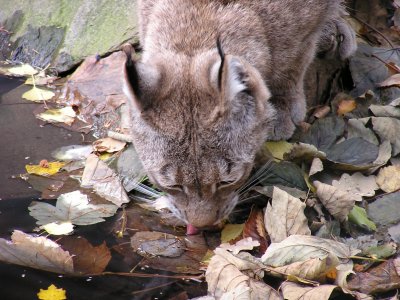
In the 5 years between 2010 and 2015, there have been 455 UK ‘big cat’ sightings reported from locations all the way from Cornwall to Cumbria. What kind of cat, no one’s really sure. But it’s generally considered likely to a lynx, panther, a puma or even a lion.
Loved by the press, the romance of each sighting gets a headline in the style of ‘The Beast of Bodmin’, ‘The Pershore Panther’, ‘The Hull Hell Cat’, ‘The Dartmoor Lynx’ and, as recently as August 2017, the ‘Wakefield Wildcat’. Norfolk tops the big cat league with 57 sightings followed by 28 in Devon and Cornwall – including five allegations of farm animals killed by big cats.
Theories include the abandonment of pets
With so many reports, it seems plausible that at least some of them must be genuine; though how such animals arrived in their UK habitat and how they survive remains a bit of a mystery. Theories include the abandonment of pets that outgrow their welcome, deliberate releases and unintended escapes.
Some sightings, however, do have an explanation. In July 2016, a two-year-old Carpathian lynx called Flaviu chewed its way out of its wooden pen just hours after arriving from Port Lympne Zoo to roam free on Dartmoor for more than 3 weeks.
Big cats are likely to make a comeback to Britain’s wild places
Whatever they are and however many there might be, it seems increasingly likely that one species of big cat may be about to make a comeback to Britain’s wild places. The Lynx UK Trust, formed in 2014, aims to emulate the success of European reintroduction projects in selected regions of northern England and southern Scotland.
Hunted out of the UK around 700AD, lynx have been reintroduced in northern Germany, where an initial introduction of 14 animals in 2000 has grown to a population of up to 100.
Concerns exist around the impact of lynx on other wildlife
The proposed project is not without its critics. Concerns exist around the impact of lynx on other wildlife, farm livestock and interaction with domestic and feral cat populations. It is, however, unlikely that any lynx population would be large enough to constitute a disease risk to domestic cats. It’s more likely that domestic and feral cat diseases, including Feline Leukaemia Virus (FeLV) and Feline Immunodeficiency Virus (FIV) and the coronavirus causative of Feline Infectious Peritonitis (FIP), would pose a threat to the success of any attempt at lynx reintroduction.
Attempting to calm the fears of its detractors, The Lynx Trust UK has offered to provide safeguards such as disease biosecurity, livestock loss compensation, satellite tracking and even ‘guardian animals’. Apparently, for all of their acclaimed ‘top predator’ status, lynx are afraid of llamas.
To find out more about our large range of veterinary diagnostic test kits visit our website: www.vetlabsupplies.co.uk or Telephone: 01798 874567
